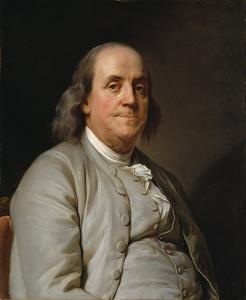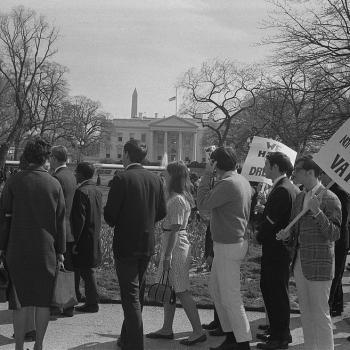 Today we welcome a guest contribution from Michael Baysa. Baysa is a Ph.D. Candidate in the Department of Religion at Princeton University. A scholar of religion and history, he is interested in the influence of cultural brokers, media management, and other publishing intermediaries on the material curation, production, and distribution of religious and racial discourse. Follow @MichaelBaysa on Twitter.
Today we welcome a guest contribution from Michael Baysa. Baysa is a Ph.D. Candidate in the Department of Religion at Princeton University. A scholar of religion and history, he is interested in the influence of cultural brokers, media management, and other publishing intermediaries on the material curation, production, and distribution of religious and racial discourse. Follow @MichaelBaysa on Twitter.
Since its launch in November 2022, ChatGPT (Chat Generative Pre-Trained Transformer) has dominated media conversations. In simplest terms, ChatGPT is a chatbot that uses AI (Artificial Intelligence) technology to mimic and replicate human speech patterns. It was initially used as a chat platform to simulate human conversation. However, its more recent iteration was trained using data from numerous digitally published pages, Wikipedia articles, and social media threads to generate long-form responses. In a way, the program has “learned” to write entire essays based on prompts users enter. Think of the autocomplete function on our phones or predictive search on our search engines but on a much larger scale. While there have been several iterations of this technology, the most recent version mimics human speech in a more accurate manner and it accomplishes more than its predecessors. Academics, across varied social media platforms, have been concerned that ChatGPT has now reached a stage where it could generate papers and pass exams on behalf of students, forcing many to rethink how to fashion course deliverables not producible by AI.

While I am not yet concerned that ChatGPT will radically change the state of academia (given that it is still prone to misinformation and incorrect data due to unclear sources for its algorithm), I am curious how Christians will respond to this technology, as it could be readily applied to religious practice. Imagine entire sermons, religious art, Bible studies, or even worship songs produced strictly by AI, drawing on copious theological content in the form of texts, images, and sounds. Perhaps, in some distant future, entire congregations will find themselves divided on whether AI might be a conduit of inspiration from the Holy Spirit. For now, it might seem like an interesting thought experiment, but it is no longer just that for several industries imagining and fearing how AI will change their practices.
Perhaps a historical perspective might provide insight on how we might approach technological change. Specifically, how have religious communities responded to new and novel media forms and what might their reactions say about how we should understand innovations like ChatGPT today? My own research on the printing press negotiates two frameworks for the relationship between religion and new technologies. The first is that religions are, by-and-large, technological laggards, who fear that innovations divert lay attention from community formation and biblical/ministerial authority. This narrative is fueled by the popular trope that the printing press facilitated the modernization of political systems and the secularization of Christianity, through the early modern period. Its ability to speedily reproduce copies of texts, which were haphazardly distributed across Europe and the Americas, provided access to information, which clergy and political elites had concealed, in order to buttress their own social, political, and religious authority. Now, as a kind of historical genre, this declension trope has shaped how people remember and retell the impact of the internet and social media on religious community and belonging.
The second framework draws from an approach employed by the historian, Nathan Hatch, in The Democratization of American Christianity, who observes that media technologies facilitated religious experimentation instead of religious decline, much like what occurred among nineteenth-century evangelical groups in the United States. Insofar as the tool participates in the creation of a religious marketplace or assists with cultivating spiritual practices, perhaps it is something that should actually be celebrated. Recently, many congregations took up this perspective towards technology, as they incorporated Zoom into their worship services, bible studies, and other religious functions. These congregations preserved, and, in some ways, expanded spiritual accessibility through the employment of technological innovation. While histories of religion and technology have leaned towards either one of these poles, many historical actors have actually occupied a middle ground: reluctance towards technology without necessarily avoiding or embracing it.
While contemporary debates concerning technology center around how these technological developments changed society for better or worse, eighteenth-century religious communities, reluctant to engage with print, identified that issues with technology were not grounded in the technological tool but rather culture and structures. In the case of the printing press, the tool simply encouraged and perpetuated habits, behaviors, and asymmetries already present in colonial society. Hence, embedded within eighteenth-century critics’ own reluctance for using the tool depended upon a deeper commentary that technologies do not transcend culture nor can they inaugurate social change. Critics recognized that people, with expanded abilities, used technologies to either facilitate transformation or preserve the status quo. They were not inclined to the technodeterminism promoted by publishers, who marketed the printing press’s capabilities to better society.
One such example appears in Founding Father and Philadelphian printer Benjamin Franklin’s Autobiography. He recounts a conversation with Michael Wohlfahrt, a follower of Johann Conrad Beissel, who founded the religious community, the Ephrata Cloister, in present-day Lancaster County, Pennsylvania. Franklin was astounded that its members relied on printed materials for hymns and educational materials but refused to publish their doctrines. The printer believed that if they relied on the printing press to make public their theological views, then it would combat misrepresentations about their community, in the public sphere. Wohlfahrt responded that print’s permanence went against their theologies on progressive revelation.
When we were first drawn together as a society, it had pleased God to enlighten our minds so far as to see that some doctrines, which we once esteemed truths, were errors; and that others, which we have esteemed errors, were real truths. From time to time, He has been pleased to afford us farther light and our principles have been improving, and our errors diminishing. Now we are not sure that we have arrived at the end of this progression, and at the perfection of spiritual or theological knowledge; and we fear that if we should once print our confession of faith, we should feel ourselves as if bound and confined by it, and perhaps be unwilling to receive further improvement; and our successors still more so, as conceiving what we their elders and founders had done to be something sacred, never to be departed from. (Franklin, Autobiography, 131-132)

Franklin appreciated this response, which made him reflect on the arrogance of his Puritan forefathers and Philadelphian Quakers. They seemed all too ready to use the printing press to perform public controversy under the guise of asserting unshakeable, unchanging truth in the public sphere. As he wrote, “This modesty in a sect is perhaps a singular instance in the history of mankind, every other sect supposing itself in possession of all truth, and that those who differ are so far in the wrong.” (132)
Wohlfarth and Franklin recognized that the printing press was not the problem. They perceived that the people employing the technology conditioned it to function culturally, politically, and theologically. Wohlfarth observed how readers had a propensity to sacralize printed texts, especially those produced by theological predecessors within their broader transatlantic religious print culture. Similarly, Franklin found print culture had come to be associated with the universalizing ambitions of New England ministers to extend their authority beyond the pulpit. To him, this practice hinted at theological pretense. In both scenarios, the culture created by the people shaped how technologies functioned, and, within the broader context of eighteenth-century political life, facilitated democratization or hindered it.
If the misuses and abuses of technology depend upon how people engineer, design, envision, imagine, and market culture, then simply introducing new technological tools will not lead to the realization of Christians’ deepest fears. Rather, those fears are only realized when Christians, themselves, are complicit participants in affecting the cultural life produced by the misuse and abuse of new technologies. Religious communities have long critiqued how new technologies fail to meet people’s expectations of their material and spiritual well-being. By taking those critiques seriously, perhaps there could be a more holistic, human solution to address the cultural issues behind the fears inaugurated by technological change.
Some academics have realized that problems with ChatGPT may have less to do with students and more to do with uninterrogated assumptions about the pedagogical environment, a la classrooms: the value of deliverables as metrics for learning, expectations around student-teacher dynamics in the classroom, and the classroom as a space that could be collaboratively constructed. Similarly, if ministers are concerned that ChatGPT will erode spiritual authority or religious community, then perhaps there are pre-existing fractures in the relationship between ministers and congregations, which new technologies simply magnify or intensify.
We can approach technologies in this manner because, at the end of the day, innovations like AI simply reflect human desires, concerns, and biases that condition society. It was certainly the case with eighteenth-century religious communities, who realized that their concerns about the printing press revolved around questions of human authority, community formation, and fractured relationships. Since the problem is ultimately grounded in human beings, the cultures they create, and how these social structures mediate human relations, perhaps religious communities should feel empowered to engage, critique, and initiate change to the cultures surrounding emergent technologies.

















